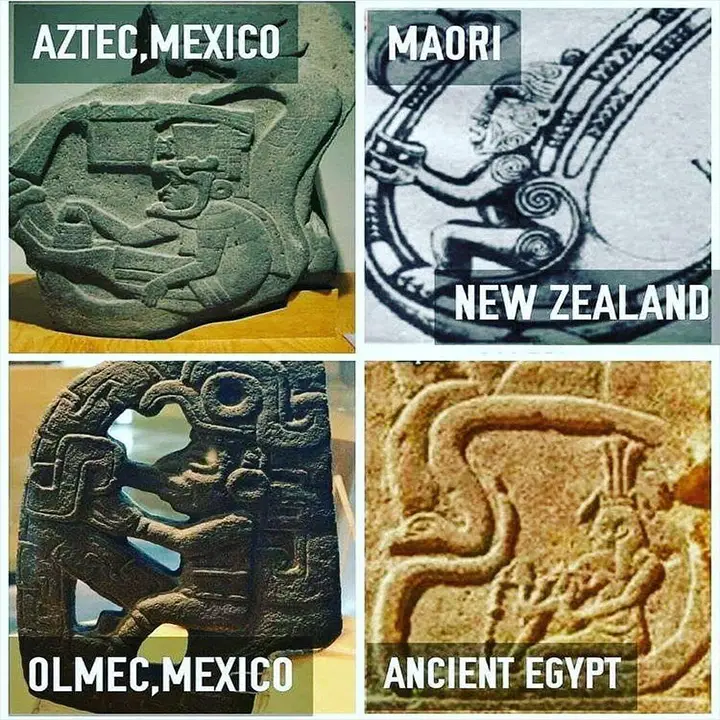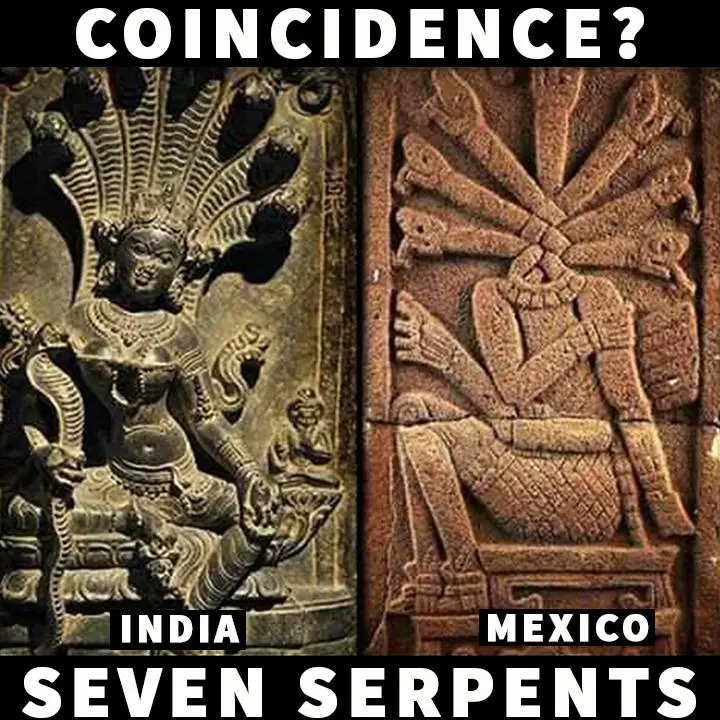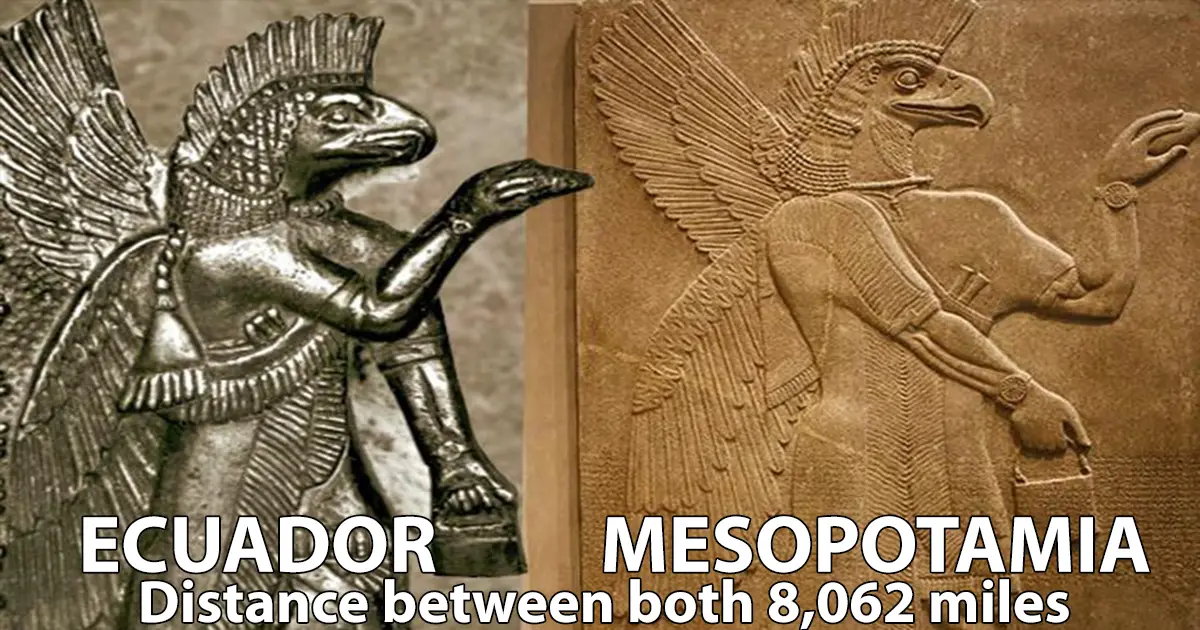Two statues, standing worlds apart, bring to light a fascinating puzzle of the ancient past. On the right, we have the formidable figure of Ninurta, the Sumerian god of war and agriculture, reigning over Mesopotamia. On the left, a nearly identical statue of the same deity resides in the private collection of Ecuadorian monk Father Carlo Crespi, found thousands of miles away in Peru.
The sheer distance between these sculptures serves as a testament to the astounding global connections of ancient civilizations. Moreover, the striking similarities between these representations of Ninurta and other monuments worldwide suggest a shared cultural heritage that challenges our understanding of history.
The Tale of Two Ninurta Statues
Ninurta, a deity of the Sumerian pantheon, was worshiped in ancient Mesopotamia, an area that encompassed parts of modern-day Iraq and Kuwait. He was the patron god of the city of Nippur and was often depicted as a warrior, armed with a bow and arrow, and a mace. His role as both a god of war and agriculture underscores the central importance of these activities in Sumerian society.

On the other side of the globe, in Father Carlo Crespi’s private collection, a statue of Ninurta emerges from the mists of history. This enigmatic figure is strikingly similar to the Mesopotamian depiction, bearing the same weapons and characteristics. How can two cultures, separated by an ocean, create such parallel representations of a god?
A Global Mosaic of Pyramids
This remarkable connection extends beyond Ninurta to other ancient monuments around the world, most notably the pyramid structures. Pyramids, often associated with the grandeur of ancient Egypt, also appear in Indonesia, Mexico, and other distant regions.
The Egyptian pyramids, exemplified by the Great Pyramid of Giza, are renowned for their precision and architectural prowess. However, pyramids with comparable geometric characteristics can be found in Indonesia, such as the Borobudur Temple, a massive Buddhist structure, and the Gunung Padang megalithic site. In Mexico, the Mesoamerican civilizations built their own pyramid-like structures, with the Pyramid of the Sun in Teotihuacan being a prime example.

These resemblances challenge conventional historical narratives that suggest isolated and independent cultural developments. Instead, they invite us to consider the possibility that there may have been a global network of communication and exchange among ancient civilizations. It’s a notion that fundamentally alters our understanding of history.

The Mystery of the World-Traveling Gods
The existence of Ninurta statues in both Mesopotamia and Peru, as well as the recurring theme of pyramids across continents, hints at a deeper mystery. Could it be that, in the distant past, there was a single global civilization that worshiped the same gods and shared knowledge and architectural concepts?

One theory suggests that such a civilization might have existed during a period of prehistory, predating the emergence of known ancient civilizations. This hypothetical civilization, often referred to as “Atlantis” or “Mu,” may have been a beacon of advanced knowledge, technology, and spirituality. If this civilization thrived, it could explain the diffusion of ideas, architectural designs, and even deities across the vast expanse of the Earth.
The Ancient Code of Symbols
Another intriguing aspect of this puzzle is the recurring symbolism found in ancient art and architecture. Common motifs, such as serpents, suns, and celestial alignments, can be observed in various ancient cultures. Could this shared symbolism be a universal language that bridged cultural divides?

Take the feathered serpent deity, known as Quetzalcoatl in Mesoamerican cultures and Kukulkan in Maya traditions. This deity was often depicted as a plumed serpent, symbolizing knowledge, wisdom, and the duality of life and death. Similar serpent motifs can be found in ancient Asian and African cultures.
Furthermore, the use of astronomical alignments and the creation of megalithic structures to observe celestial events was widespread among ancient civilizations. Whether it was Stonehenge in England, Machu Picchu in Peru, or the Great Pyramids of Giza, these monuments reveal a shared fascination with the cosmos.
Conclusion
The enigmatic statues of Ninurta in Mesopotamia and Peru, coupled with the presence of pyramid-like structures in various corners of the world, challenge our preconceived notions of history. They beckon us to reconsider the possibility of a shared, global civilization that existed in the mists of antiquity. This civilization, if it did exist, could have acted as a beacon of knowledge and spiritual wisdom, facilitating the exchange of ideas, art, and architecture across continents.
While the exact nature and extent of these connections remain speculative, they open a portal to a new perspective on the past. They invite us to explore the possibility that our distant ancestors were more interconnected and culturally intertwined than we ever imagined. As we delve deeper into the mysteries of these ancient artifacts and their commonalities, we may discover new pieces of the puzzle that could rewrite history books and reshape our understanding of the ancient world.
VIDEO:

